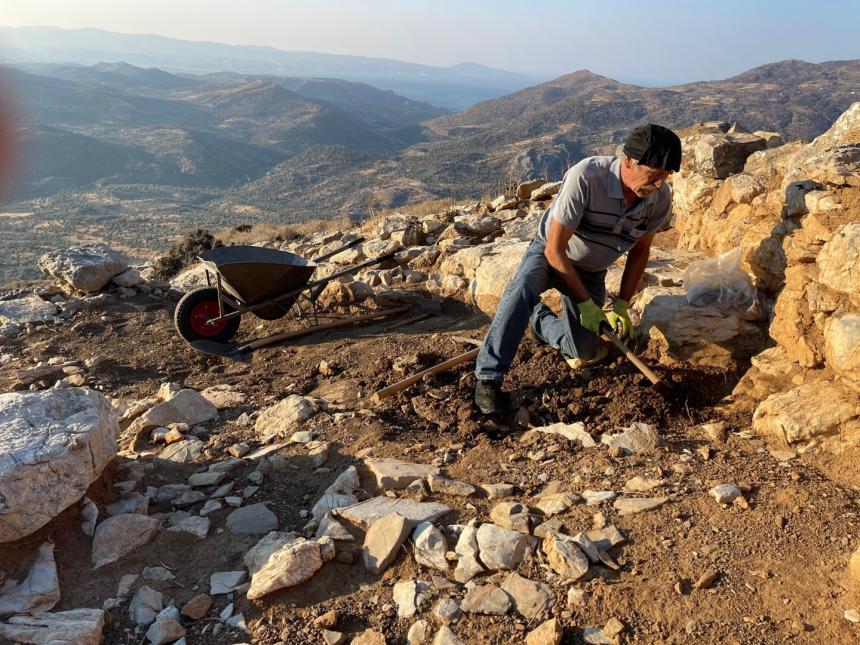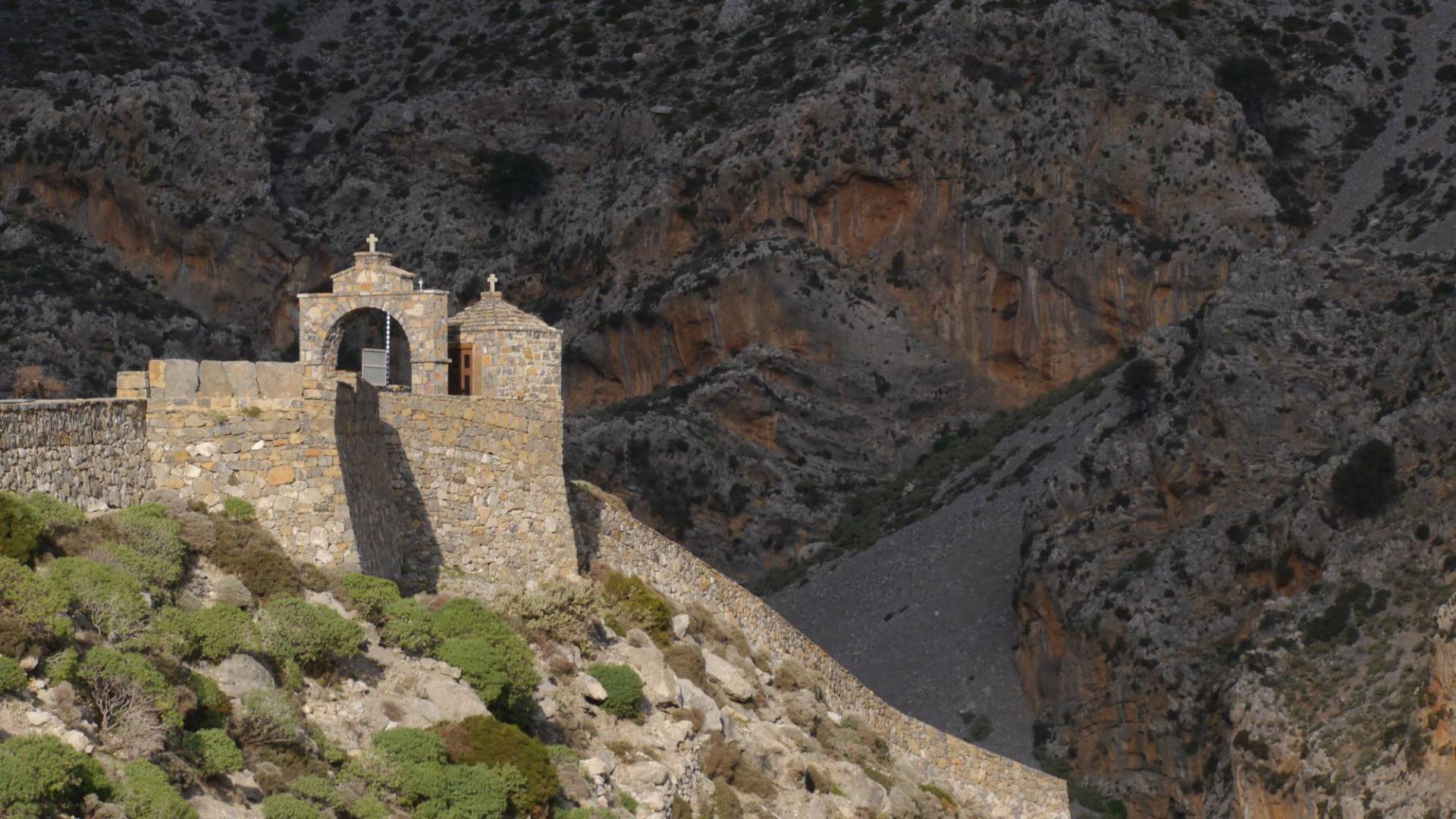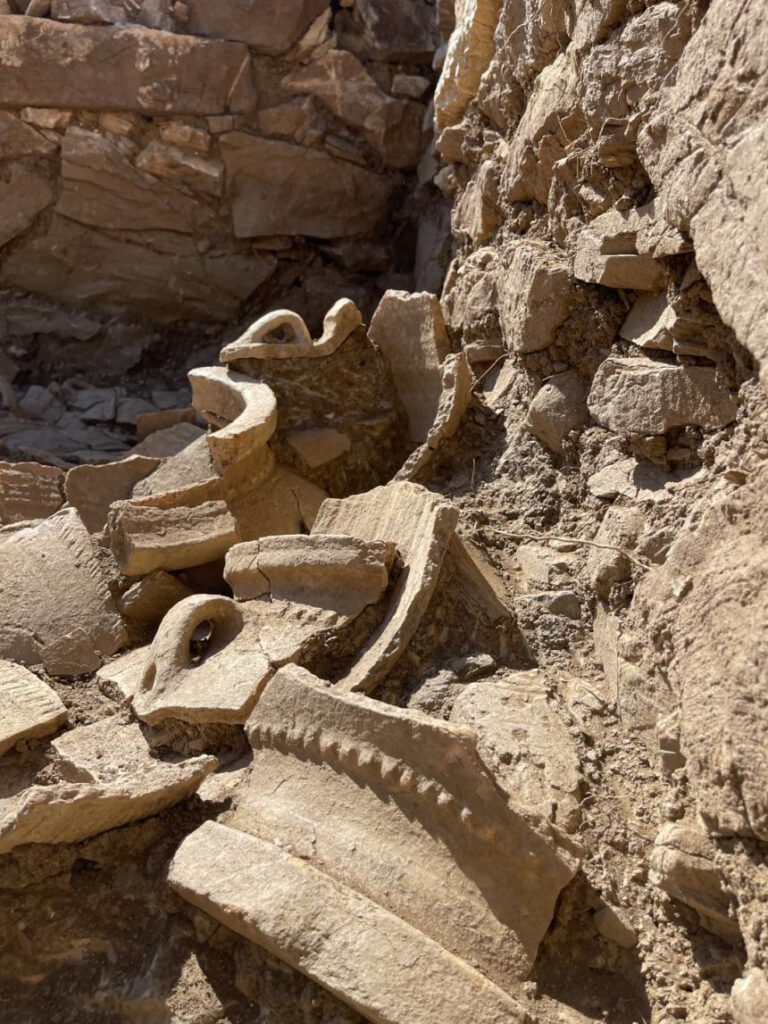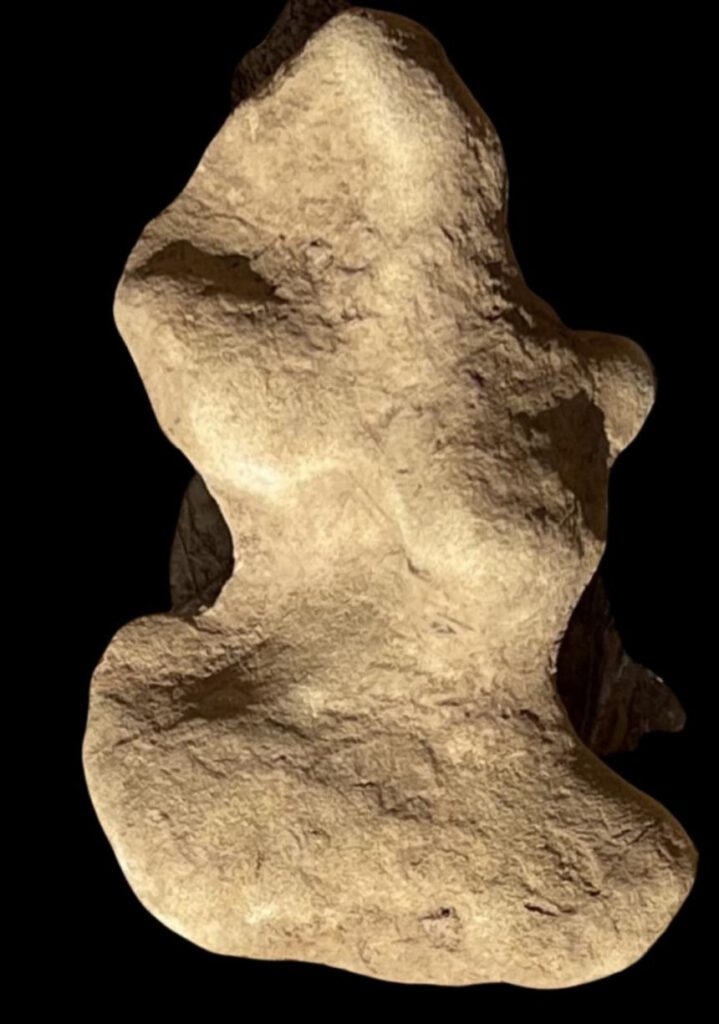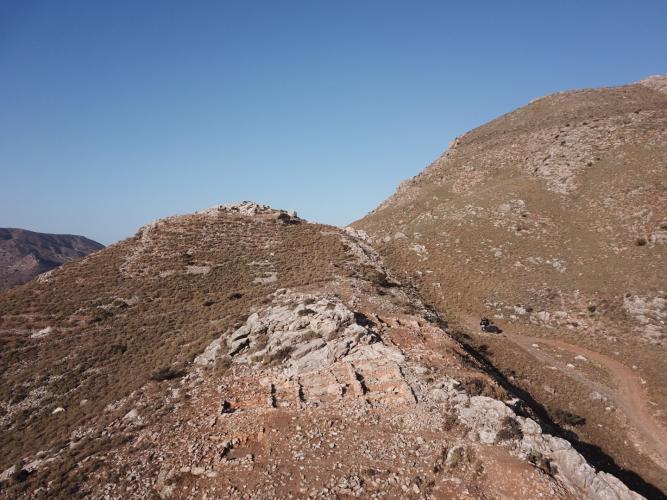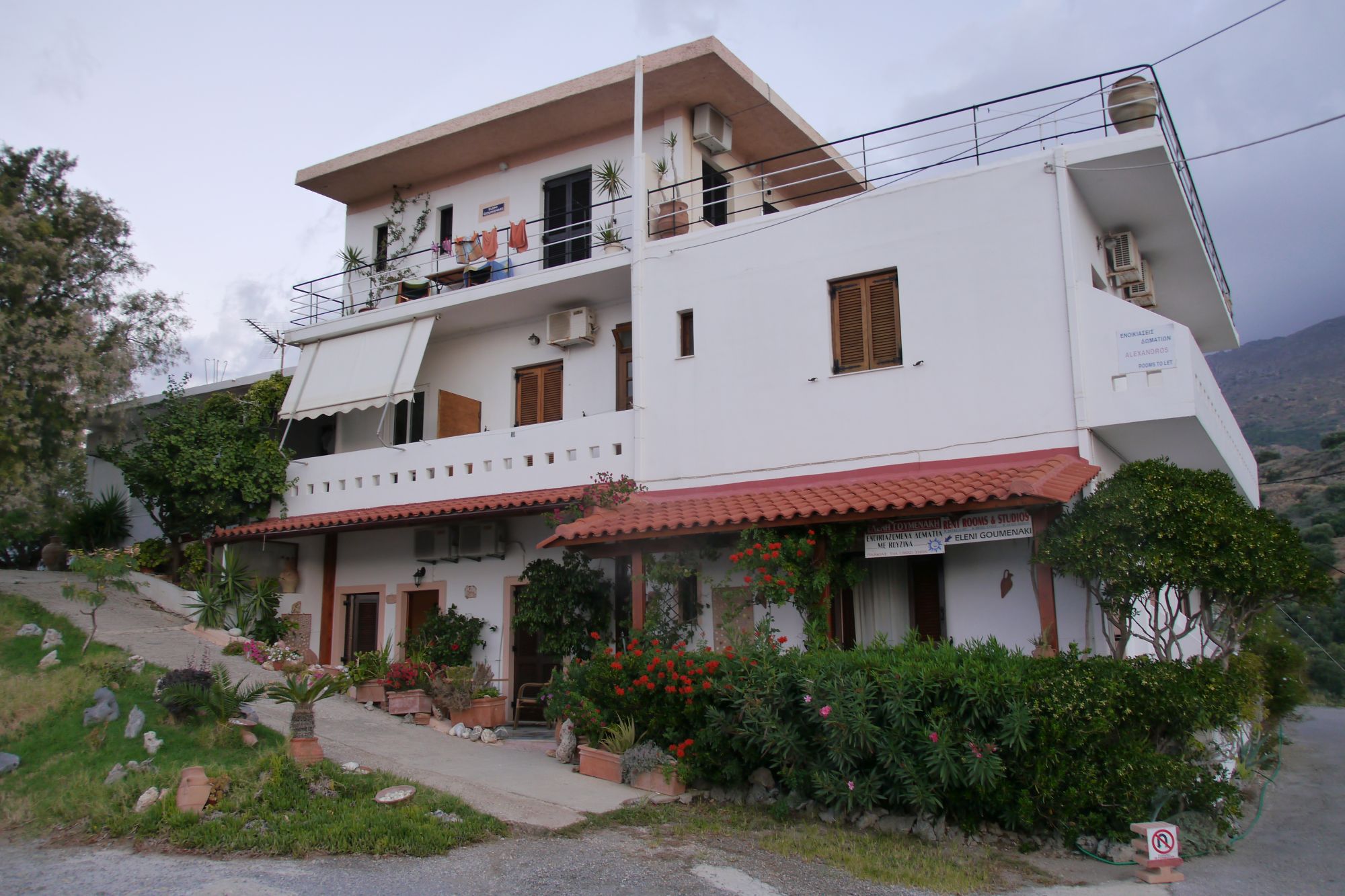In 2022, a five-year excavation cycle was completed, during which remains of a Mycenaean acropolis were uncovered at Orne – Lambi, Agios Vasilios, Rethimnou.
The following article, translated into English, was published in Rethimnonews on 10.01.2023. . There is a picture gallery at the end of the original article.
For the chronological classification:
the Mycenaean period on Crete ranged from 1400 to 1100 BC.
A view of the location of Orne and the site of the excavations:
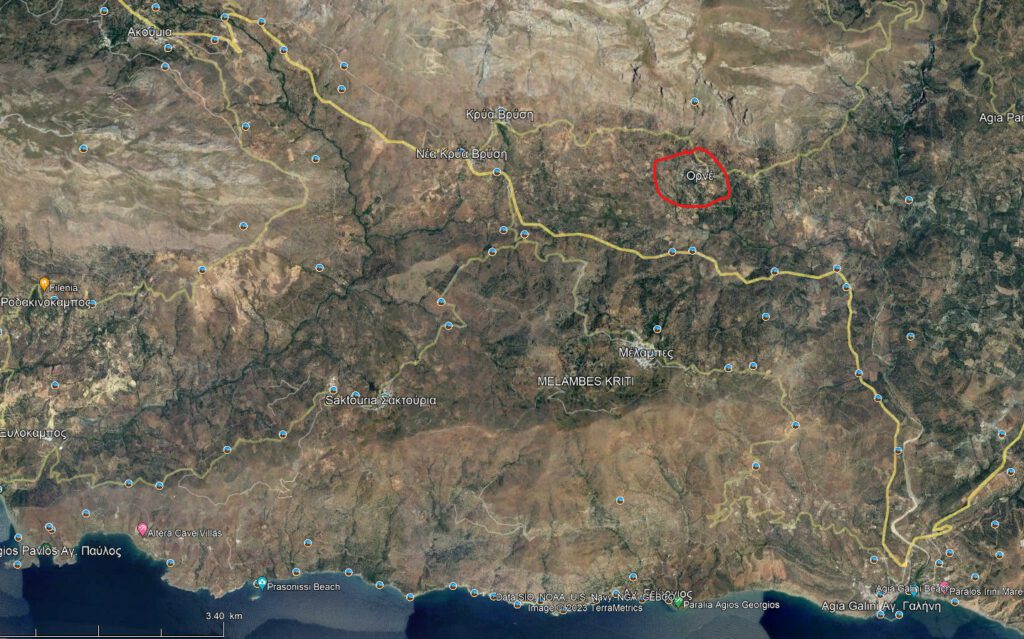
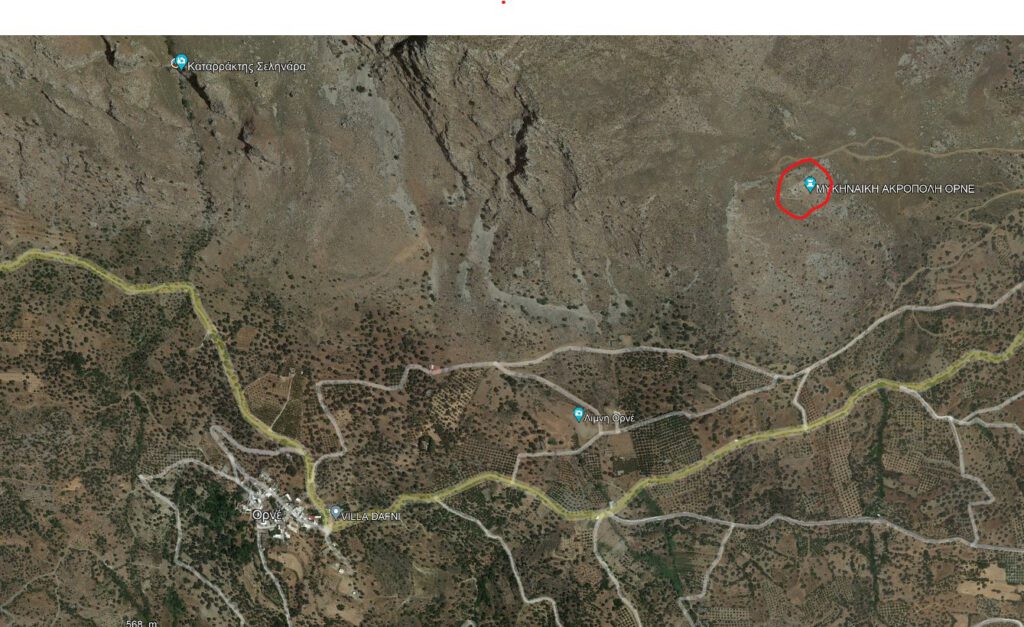
xxx
RETHIMNO 10.01.2023 11:00
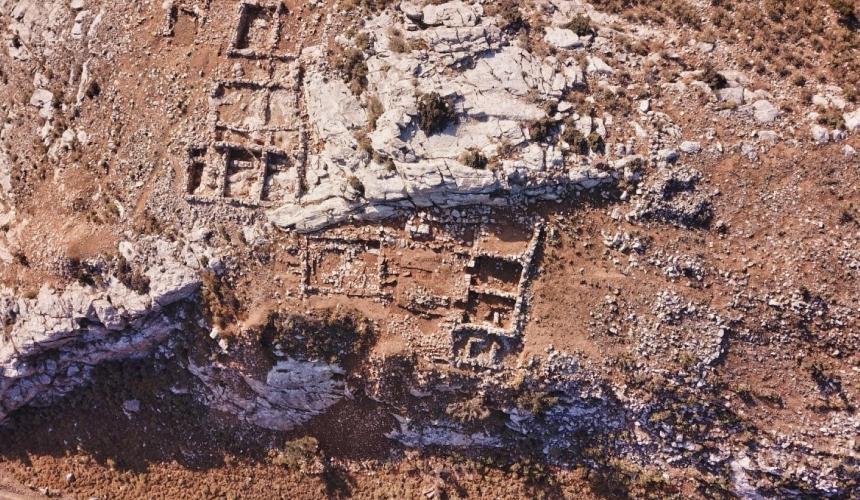
Mycenaean principality discovered south of Rethymnon
Manousos Klados
IMPRESSIVE ALSO THIS YEAR’S FINDS IN ANCIENT ORNE
REQUEST FOR A NEW FIVE-YEAR PROGRAMME FOR EXCAVATIONS
A Mycenaean principality that controlled the roads to the sea in southern Crete is discovered in Orne of Agios Vasileios, where a first five-year cycle of excavations was completed in the summer of 2022.
It is the largest acropolis discovered on Crete and one of the largest that archaeological excavations have uncovered so far in the south-eastern Mediterranean. The finds are impressive and the new information about ancient Crete contributes to a better and more thorough knowledge of our island’s long past.
The extent of the archaeological wealth unearthed in the south of Rethymnon, which is of worldwide interest, has led the excavation team to apply for permission for a second excavation project, as it has become apparent that the ancient acropolis of Orne can yield even more “treasures” in terms of finds and historical knowledge.
And this is the work of eminent archaeologists who have worked hard in recent years to bring to light an “unknown world” whose “secrets” have been hidden by centuries past.
The excavation team that succeeded in “illuminating” the past “hidden in the hills of Orne” consists of Professor Nikos Chr. Stambolidis, Director of the Acropolis Museum, Professor Manolis Stephanakis of the University of the Aegean, Dr. Athanasia Kanda, Honorary Director of Antiquities of the Heraklion Regional Unit, Anastasia Tzigounakis, Director of Antiquities of Rethymnon and archaeologist Manos Papadakis.
THIS YEAR’S FINDINGS
This year’s impressive finds provide new evidence for the Mycenaean period of ancient Crete, as described in our newspaper by eminent archaeologists Athanasia Kanda and Manos Papadakis.
In particular, research continued last summer on the 12th century BC buildings, which show that the densely populated and fortified citadel had excellent architectural and urban design, indicating the existence of an organised central administration. It seems that there was a Mycenaean principality in Orne that controlled the natural routes to the sea through the area of present-day Agia Galini and also the valley of Amari to the plain of Messara.
The Acropolis, which is one of the largest in the south-eastern Mediterranean with an area of 55 hectares, was a fortified settlement in which many more people lived than previously assumed, as the buildings are very densely arranged on the enclosed site.

In 2022, buildings with storage and laboratory space were also found. Including a metallurgy workshop, as shown by a die, a mould for making copper beams. And in 2022 there is also clear evidence of the existence of places of worship, as shown by the figurines found in various rooms.
The streets are paved. There are impressive, very large rooms paved with slabs, as well as methane rooms (μεθρανία translates as methane throughout,, which, in my opinion, makes no sense; otherwise, a Google search for it also yields no result, note by the translator)for different purposes. The exploitation and design of the steep terrain testifies the skill of the builders and the need to use all the available land, for the citadel has flatter sections that could have been used on their own if there had not been pressure to accommodate a large number of inhabitants.
The acropolis of Ornes was destroyed by fire, probably preceded by an earthquake, as evidenced by the shaken walls and burnt beams. Inside the rooms, objects were found that were used by the inhabitants and left behind after the citadel was abandoned.
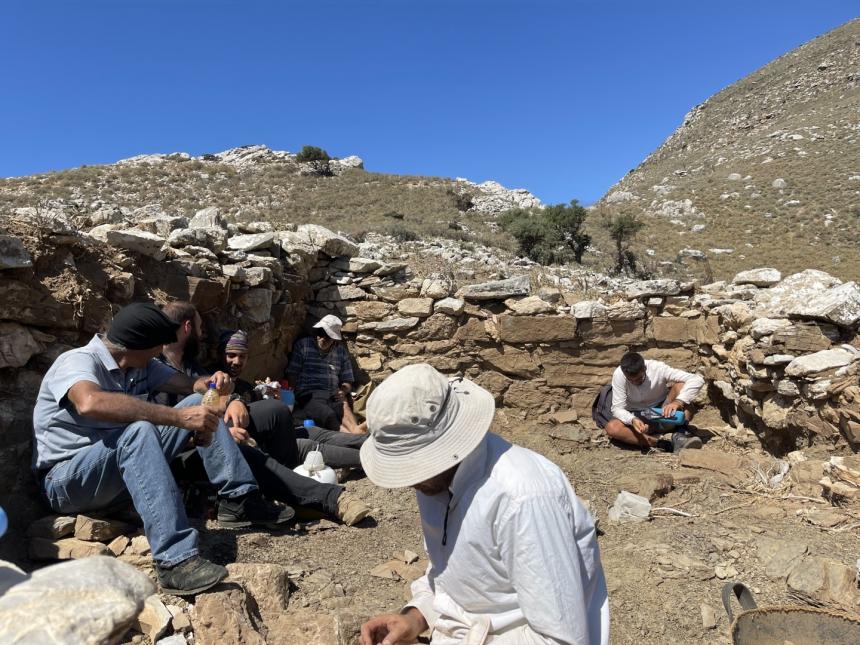
A NEW EXCAVATION PROGRAMME IS NEEDED
The 2022 excavations at the Mycenaean Acropolis of Ornes successfully completed the five-year excavation programme approved by the Central Archaeological Council.
The research was carried out with grants from the Region of Crete, the Municipality of Agios Vasileios and the Institute of Aegean Prehistory. The mayor of Agios Vasileiou, Mr. Ioannis Tatarakis, and the staff of the municipality have been instrumental in supporting the excavation work.
The excavation team has already applied for approval for a new five-year programme of excavations on the Acropolis with a new application to the Ministry of Culture and Sport.
The new programme is absolutely necessary and reflects a promising future of excavations and discoveries.
